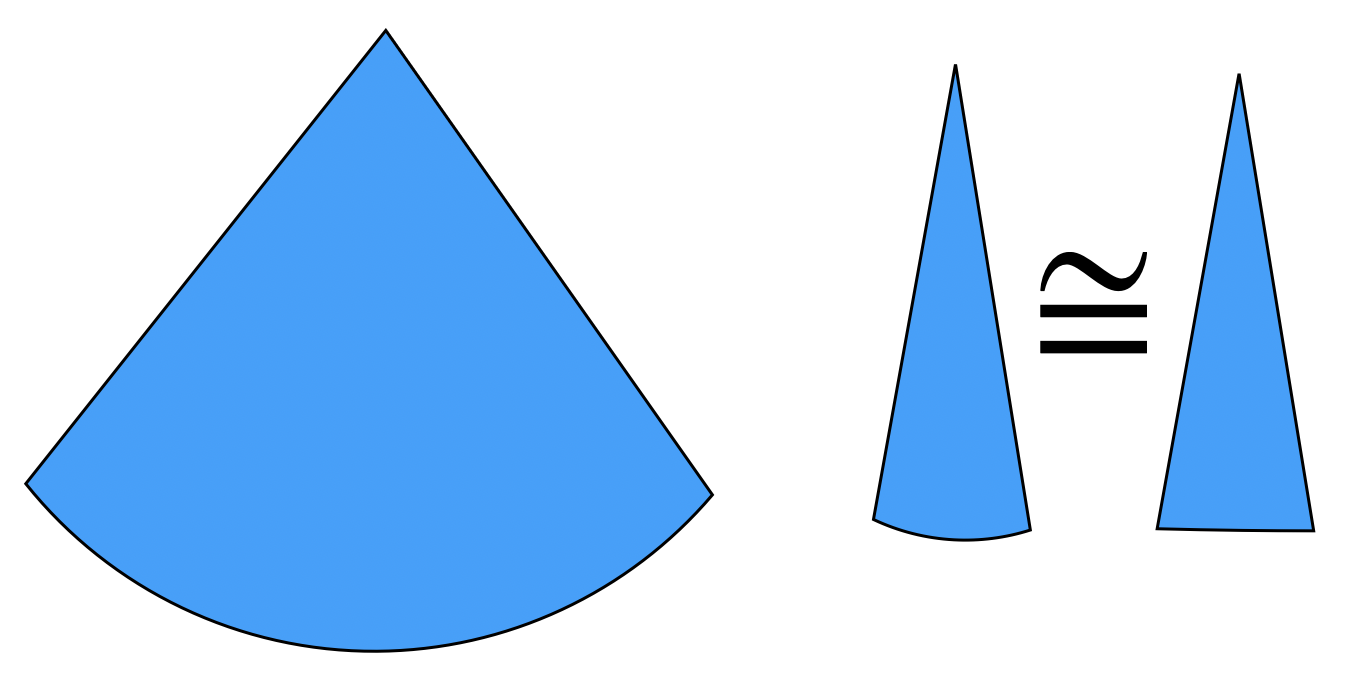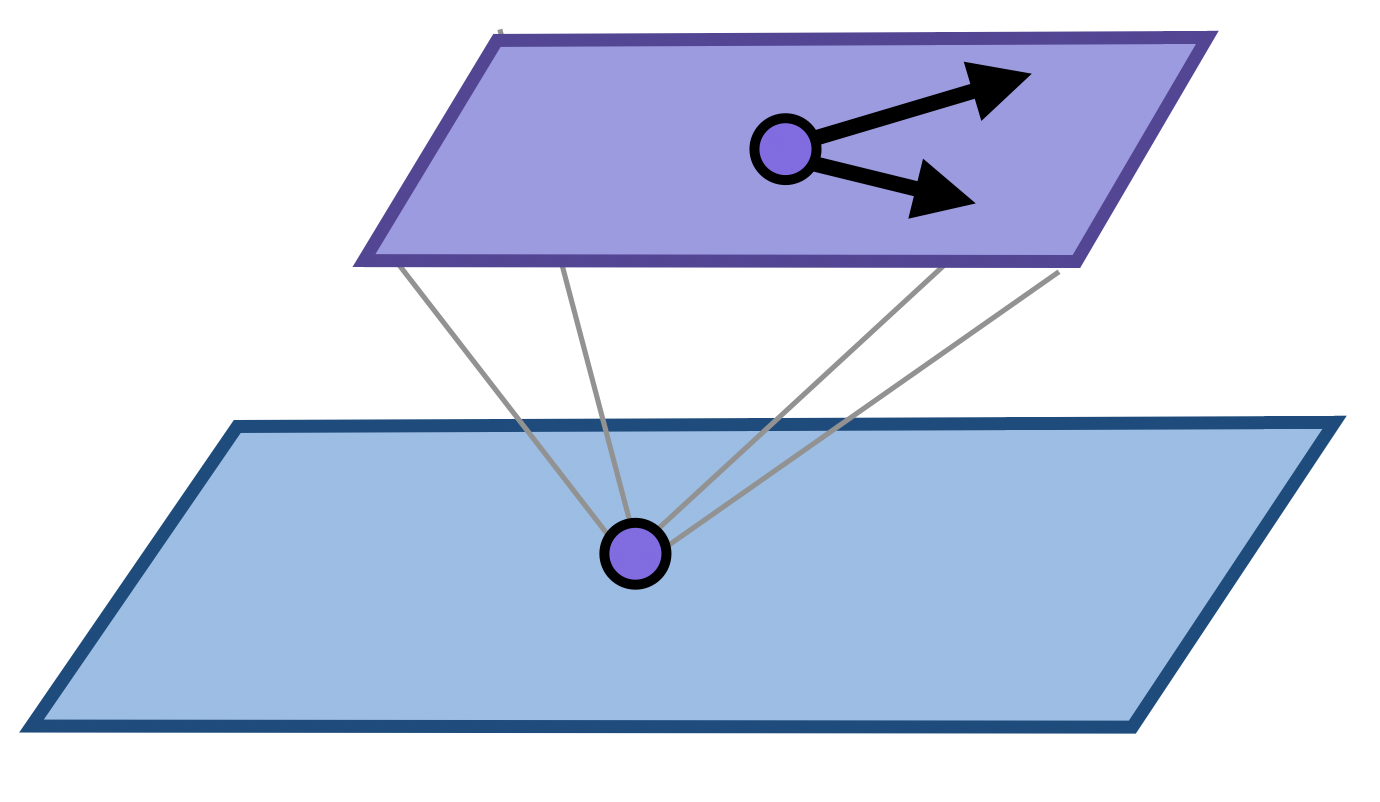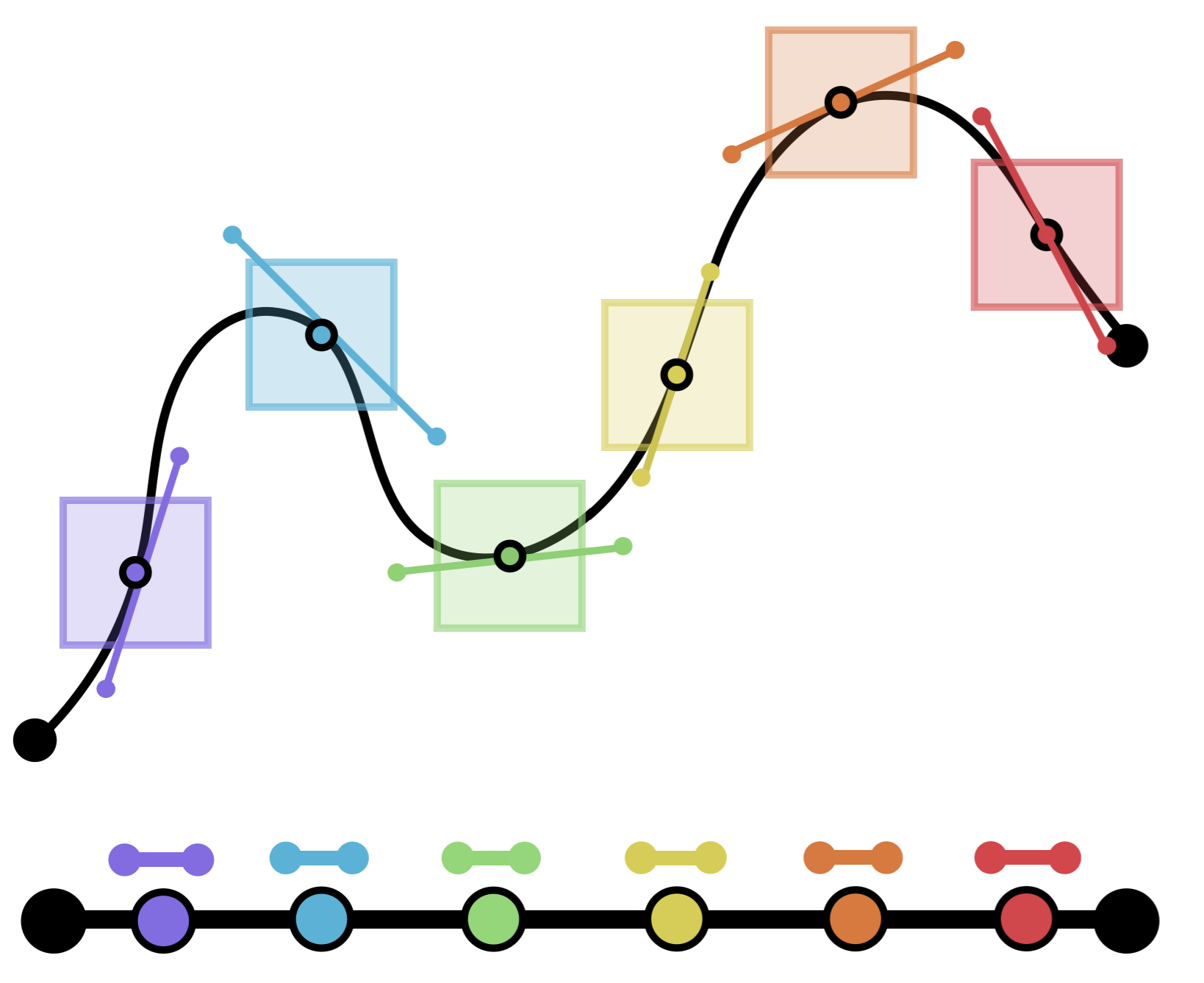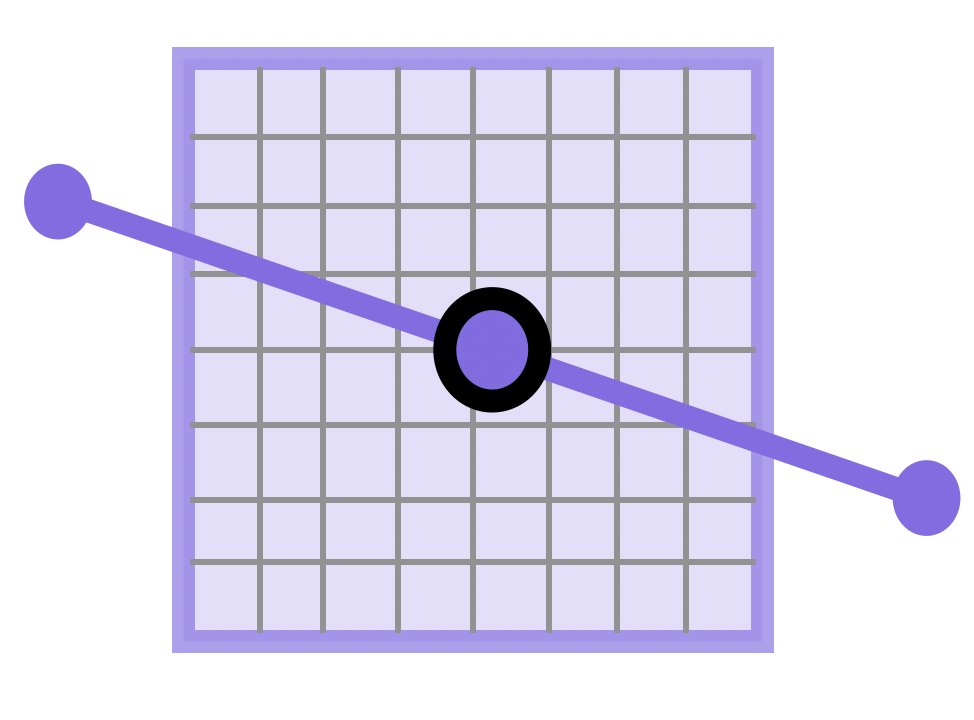6 Fundamental Strategy
Calculus is the story of humanity’s quest to understand infinity: dealing with the infinitely small (differentiation), infinitely large (convergence), and processes that occur infinitely often (sequences, and infinite series). Out of this philosophical quandries grew an extremely useful set of mathematical tools that radically changed our world.
No longer were we constrained by the straight line geometry of the Greeks, or even the algebra of polynomials from the Middle East. The new mathematical tools provided a means of calculating - or a calculus with arbitrary curves.
The Fundamental Strategy of Calculus Upon zooming in far enough, functions appear linear. At this level of zoom, you can replace difficult (nonlinear) problems with simple (linear) ones
This was Archimedes’ fundamental insight. In trying to compute the area of a circle, he divided it into small circular wedges. Of course, it was no easier to calculate the area of a wedge than it was to calculate the area of the circle as a whole - as each wedge still had a curved (nonlinear) side. But - as the number of wedges grew - each wedge shrank, and allowed us to zoom in on a smaller and smaller piece of the curve. The farther we zoom, the closer this small curved arc is approximated by a straight line - making our problem into a linear one: we replace the area of a curved sector with the area of a triangle!

This insight was discovered time and again over the following twenty centuries, by mathematicians the world over. As this is a geometry course - and not one on the history of calculus - we will not have the time to treat many of these amazing insights with the respect and awe they deserve. (Though, for those interested in such matters - consider taking Real Analysis with me in the spring!).
6.1 Infinitesimal Space
In the original, pre-rigorous formulations of calculus, mathematicians had the correct picture in their minds - that if you zoom in far enough on any smooth graph, it should look linear. But they had difficulty putting this intuition on a firm mathematical footing. Of course, at any finite level of zoom the curve is not linear, but still curves very slightly! It’s only in the limit of infinite zoom that this approximation becomes exact.
But at the level of infinite zoom, what is the resulting line made out of? It can’t be made out of regular points
But immediately from this idea sprung forth many questions: how many of these infinitely small numbers must there be? If

What about in the plane? If

This mental picture seemed to make perfect sense, but there were some deep questions. What are the rules of arithmetic for infinitesimally small numbers? Using arithmetic for just infinitesimal numbers alone, or just finite (normal) numbers alone posed no trouble, but strange things happened if you tried to combine them. If
Theorem 6.1 The real line does not contain any infinitesimal numbers.
This tells us as geometers that we should not be trying to combine the arithmetic of finite and infinitesimal numbers, and should instead keep them separate! This in fact makes things easier: at each point of the plane we have a plane of infinitesimal numbers, but different infinitesimal planes do not mix together, or with the points of the space. Because we often use these infinitesimal numbers to describe tangents to curves, the modern terminology for these infinitely zoomed in spaces are tangent spaces
Definition 6.1 (Tangent Space to the Line) To every point

Definition 6.2 (Tangent Space to the Plane) To every point
Remark 6.1. “Nice enough” here means that when you zoom in, linear algebra begins to apply. The collection of spaces for which this is possible are called manifolds.
These definitions look very similar, and invite an immediate generalization. If
To keep things straight, its useful to have some notation for tangent vectors, that will help us remember where they are based at.
Definition 6.3 Let
A warning - if you don’t keep careful track of where a vector is based, its easy to get confused! The vector

This will feel much more natural once we start actually doing calculus in this way.
6.2 Implementation
In broad strokes, modern applications of calculus follow closely Archimedes template. Given a difficult, nonlinear problem, the first step is to zoom in: to look infinitesimally in the tangent space of every point, where the problem simplifies and becomes linear.

While zoomed in, we work infinitesimally and simplify the problem as much as possible, taking advantage of the linear mathematics we now have to work with.

Once we have succeeded at this, we zoom out: piecing back together the infinitesimal linear information from all the relevant points into finite information answering the original question.

These steps may look different from problem to problem, but the overall strategy remains unchanged. Most of the time the zoom in step involves some form of differentiation, or tangent line approximation, but the zoom out step can be more varied. The most common means of zooming out is integration combining infinitesimal information from an infinite continnuum of points. But infinite summation is also a means of zooming out - combining together an infinite sequence of infinitesimal terms. And sometimes, zooming out requires no extra work at all: if we can solve the problem completely at the infinitesimal level, our zoom out is only to come back up to reality and report the answer.
Below are several familiar examples of the fundamental strategy in action, so you can see the variety of methods fitting this general framework.
Example 6.1 (Area Under a Curve) Starting with a continuous function on an interval
Zoom In: If we look infinitesimally near a single point
Work Infinitesimally: Thus the infinitesimal area is given by an infinitesimal rectangle as the top side is no longer curved.
Zoom Out: To get the total area, we need to combine together (sum up) the areas of these infinitesimal rectangles. At any finite level of zoom this would be a (Riemann) sum, but at the infinite level of zoom of calculus, this becomes an integral!
Example 6.2 (Archimedes’ Parabola) To find the area under a parabolic segment, Archimedes followed a similar approach, though without the modern theory of integration. This makes the application of the fundamental strategy even more clear.
Zoom In: Fill the parabolic segment with more and more triangles. As the triangles get smaller, they zoom in more and more on smaller segments of the parabola, which are better and better approximated by the straight edges of the triangles.
Work Infinitesimally: The area of each triangle is easy to calculate, and the relationships between the areas of different triangles (for instance, those in level
Zoom Out: To find the area of the entire parabola, we must sum the areas accumulated at every level. Its no longer relevant where these numbers came from as we know the pattern: each number in the list is
Example 6.3 (Computing Function Values) Consider the problem of evaluating a function line
Zoom In: Some values of
Work Infinitesimally: Differentiating
Zoom Out: Now that we know the infinitesimal pattern, we must assemble all this information into a function. Its easy to write down a linear function with
Summing this series at any point
Example 6.4 (Maximizing a Function) Given a smoothly varying function
Zoom In: Our main insight is that when a function has reached its maximum value, it changes from increasing (before the peak) to decreasing (after the peak). Zooming in at some point
Work Infinitesimally: If a function is increasing the derivative is positive, and when its decreasing it’s negative. So, when it switches from increasing to decreasing, we must have
Zoom Out: To zoom back out, we need to consider the entire interval and make sure we have found the answer. The calculus procedure above let us find all the points where
In this Part of the book, we will do a deep dive into these three components of the fundamental strategy, so that we can utilize this powerful tool in the rest of our geometric investigations. First, we will learn about working infinitesimally - that is, what linear functions look like in one and two dimensions. Then we will learn how to zoom in - starting with a nonlinear function and differentiating it to get something linear. And finally, we will review methods of zooming out: integration and power series.